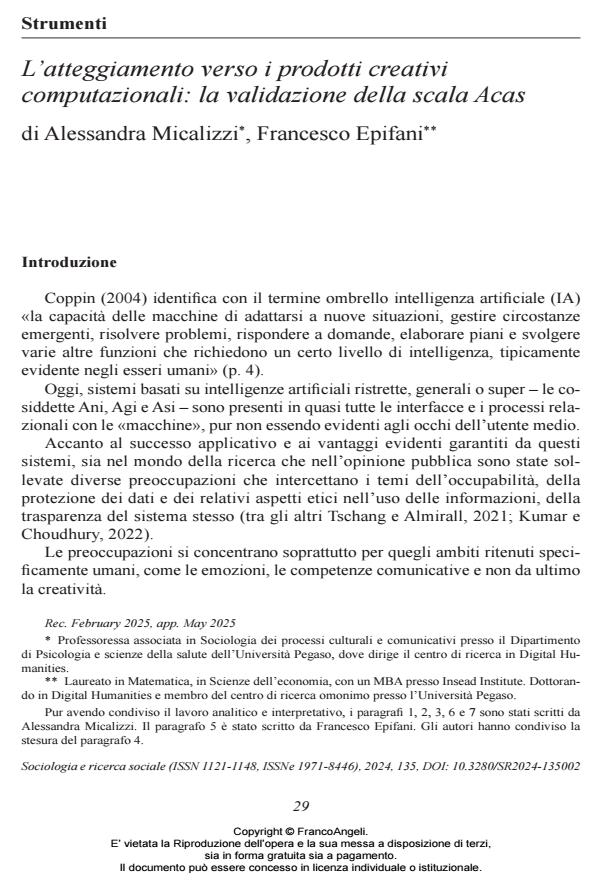L’atteggiamento verso i prodotti creativi computazionali: la validazione della scala Acas
Titolo Rivista SOCIOLOGIA E RICERCA SOCIALE
Autori/Curatori Alessandra Micalizzi, Francesco Epifani
Anno di pubblicazione 2025 Fascicolo 2024/135
Lingua Italiano Numero pagine 22 P. 29-50 Dimensione file 286 KB
DOI 10.3280/SR2024-135002
Il DOI è il codice a barre della proprietà intellettuale: per saperne di più
clicca qui
Qui sotto puoi vedere in anteprima la prima pagina di questo articolo.
Se questo articolo ti interessa, lo puoi acquistare (e scaricare in formato pdf) seguendo le facili indicazioni per acquistare il download credit. Acquista Download Credits per scaricare questo Articolo in formato PDF

FrancoAngeli è membro della Publishers International Linking Association, Inc (PILA)associazione indipendente e non profit per facilitare (attraverso i servizi tecnologici implementati da CrossRef.org) l’accesso degli studiosi ai contenuti digitali nelle pubblicazioni professionali e scientifiche
Artificial intelligence is increasingly permeating our practices, both visibly and subtly. While the mediation of a learning-capable engine facilitates many tasks, it also generates individual and collective anxieties (Pireddu & Meriggi, 2024). Following a review of the state of the art, this paper presents the validation process of the Artificial Creativity Attitude Scale (Acas), a tool designed to measure attitudes toward computationally creative outputs. Drawing from the Technology Acceptance Model (Tam) (Davis, 1989) and a multidimensional conception of attitude (cognitive, emotional, and behavioral components), the paper outlines the item development process and the construction of resulting clusters based on score analysis.
Alessandra Micalizzi, Francesco Epifani, L’atteggiamento verso i prodotti creativi computazionali: la validazione della scala Acas in "SOCIOLOGIA E RICERCA SOCIALE " 135/2024, pp 29-50, DOI: 10.3280/SR2024-135002